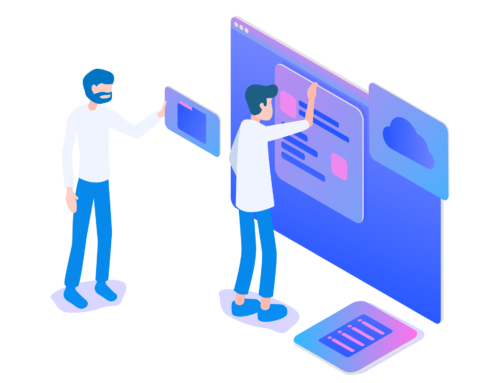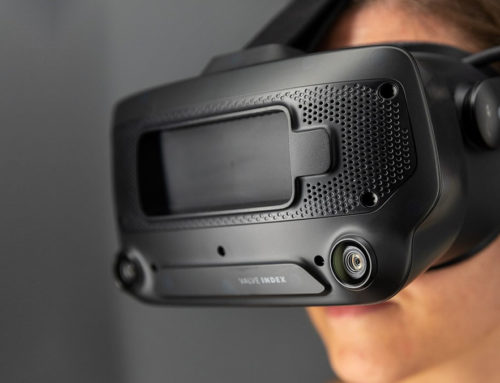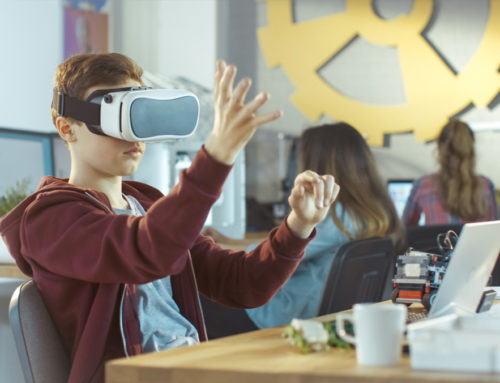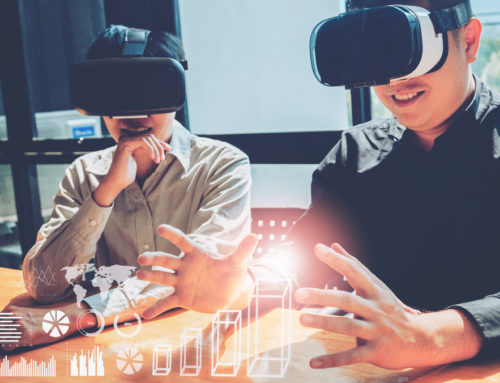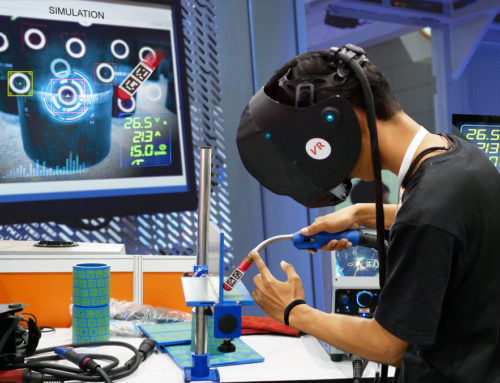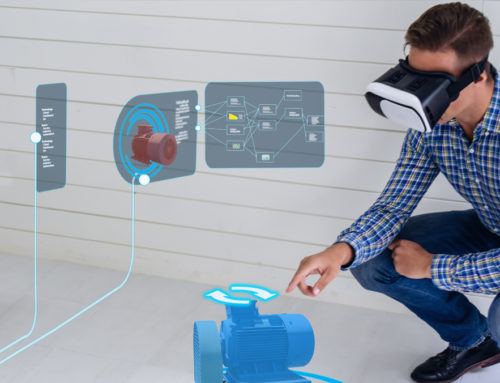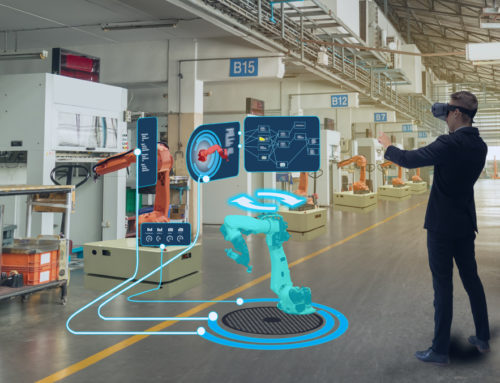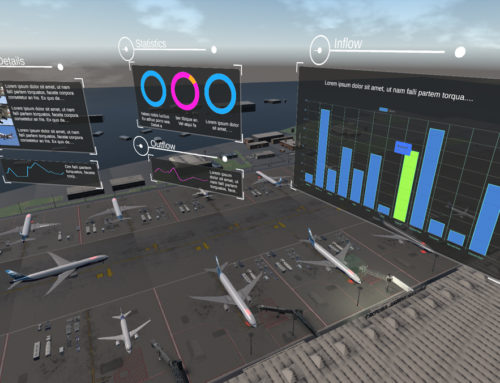Key Takeaways
Remote Training is Here to Stay
The Covid pandemic hasn’t just changed the way many of us work – it’s also fundamentally changed how we learn too. While remote training isn’t a new phenomena, it has given organisations the chance to build and maintain training programmes to ensure that employees have access to training and development opportunities.
Covid has accelerated the trend of moving to remote working – with . And although this brings many advantages, creating a cohesive and collaborative working environment can be challenging. Remote training can play a crucial role in not only ensuring individuals have the skills they need to do their jobs well and develop their careers, but also in ensuring teams can continue to work effectively together. One thing is for sure, as remote and hybrid working is here to stay, remote training will become more significant than ever in a businesses training portfolio.
For remote training, engagement is key. But how can you introduce remote learning experiences that will spark the imagination, encourage collaborative working and ensure that employees benefit from learning and retaining new skills?
Inherent Problems With Remote Training Content
While remote training can provide businesses with an invaluable way to ensure their workforce are armed with the skills required to perform their jobs to a high standard, it’s not without its challenges. These can include:
-
Competing with distractions
One of the biggest challenges to remote training is distractions. When training remotely, learners will generally be accessing content on work equipment, so will be able to see urgent emails flying into their inbox, which may prompt them to multitask or disengage with the training entirely. And it doesn’t end there; the potential for external distractions is limitless, from interruptions by work colleagues and ringing phones through to delivery drivers at their door if learning from home.
-
Making sure it’s easily accessible
Remote training inevitably relies on a learner’s ability to access content with the help of technology – from hardware such as laptops and software such as specific platforms and apps, through to requiring a reliable internet connection. Ensuring that all employees’ equipment is up to spec for using specific training platforms can be a challenge. The learners technical abilities also need to be considered – complex systems may not be user friendly for less tech-savvy employees.
-
Keeping pace
We all learn at different speeds, which causes a natural challenge for all trainers and training courses. Getting the pace right is crucial; go too fast and learners may fall behind and be left feeling confused and demotivated; too slow and you’ll lose their attention. Striking this balance is particularly challenging for remote trainers, as it can be difficult to read the room and pick up on both conscious and subconscious cues to make necessary ad hoc changes.
-
Creating the right atmosphere
For traditional training courses, the physical space can help to set the right tone for the course – from room layouts through to specific equipment available in the training space. For most remote training programmes, this isn’t possible, as most learners will be limited where they access the training – whether that’s in a home environment, down their local cafe, at their desks or a meeting room in the office – or somewhere completely different! This puts additional onus on the trainer to set the tone and create the perfect virtual learning environment to complement any course content.
-
Scheduling
While some remote training courses, such as pre-recorded e-learning can be accessed flexibly at a time that suits the individual, trainer-led courses still rely on scheduling courses at a fixed time and date. This can lead to the challenge of aligning diaries, a particular issue for international teams working across a variety of time zones.
Strategies to Engage Remote Learners
1. Sell the benefits of training
For some employees, training can be seen as a chore and may bring a negative mindset to their remote training experience, which will in turn impact on its effectiveness. Getting learners excited about the prospect of learning new skills before they log on in is crucial; make sure they are aware of what they will be learning, how this can be applied in their work and the potential impact it can have on career development.
2. Great pre-training information
Preparing the learner for what to expect from the remote training will lay the foundations for a great learning experience. Make sure they have all the practical details well in advance, in addition to any pre-coursework or reading that may need to be completed. Give them plenty of information on course content and structure, so there’s no unexpected surprises on the day. By doing this, you will be helping your learner to come to the course relaxed, as well as ready, willing and able to learn.
3. Make it personal
Training as a tick box exercise can have learners skipping courses, or multi-tasking throughout. Making sure that course content and training programmes are addressing the skills needs of each individual learner is crucial. As a learner, knowing that a course can directly provide you with new or improved skills to support your career development, or simply make your working life a little easier is a significant motivating factor and can offer you tangible benefits.
4. Keep it short and snappy
When it comes to online training, length matters. Long intensive training sessions just don’t work – you’ll lose the attention of your learner, who will inevitably get distracted and be less likely to retain knowledge.
Try to keep each sessions to less than an hour at a time – breaking up longer training programmes into bite-sized modules. Mixing content is also a useful way to structure a course – adding instructional videos, graphs and data visualisations, quizzes and polls, interactive discussions and group work can help to keep learners engaged throughout.
5. Add rewards
people love to hear they are doing well at something – and this is no different in the training environment. Creating exercises and discussion opportunities is not only a great way to gauge whether training is working, but it also gives trainers the chance to offer encouragement and praise throughout the training experience.
What’s more, providing post-course certificates and online badges for learners to celebrate their training successes can help to motivate learners both during and post the experience.
6. Connect with the learner
For live remote training sessions, trainers need to have a presence to connect with learners. Visibility is key; so being on full screen at the start and close of any training experience is crucial. Presentation tools such as PowerPoint are great for structuring presentations and sharing information – but they can be a passive – and sometimes dull experience for learners. Try to keep that human touch going throughout; use presenter mode so that trainers are on screen at all times and keep a personal connection.
Moreover, keeping a level of informality, engaging with learners from the start, encouraging questions, and inviting active participation throughout can help learners to stay alert, interested and resisting the distractions their remote locations can offer,
For recorded, non-live remote training, connecting with the learner can be challenging. But keeping that human touch is beneficial, for example, keeping a video trainer on screen rather than having a reading-heavy experience can make your remote training course more impactful and memorable.
7. Spark conversation to keep it social and fun
For live, online training with multiple learners, encouraging interaction is a great idea. Firstly, encourage people to use their cameras so learners can see each other – it’s also a great way for trainers to gauge whether learners are engaged, as well as helping to build personal connections. Getting learners working together is also highly impactful. By utilising virtual breakout rooms, you will be creating a collaborative learning experience rather than simply offering an online lecture; a potentially better approach for an engaging experience during training, through to retaining knowledge long term.
8. Keep it going!
Freeing learning from the confines of a classroom means that learners can learn flexibly and use online platforms to continue their training after the course is completed. Providing course content and user guides offers learners a handy and easily accessible way to re-visiting course learning, test their knowledge and practice their practical skills. It’s also worth considering providing post-event access to trainers for a truly personalised learning journey.
9. Get interactive
Listening passively to someone talking for a significant length of time is boring and uninspiring. Remote training has the potential to be a highly effective way to train employees, but courses need to hold their attention and win over any temptation to be distracted.
Keeping courses interactive is a must. For live, trainer-led courses, start as you mean to go on. Get learners to introduce themselves, as well as adding elements of interactivity from the start. Regular quizzes, online polls, asking informal questions and group discussions are great ways to keep learners engaged and on track. Don’t forget that simple chat functions can also help learners to ask questions, give feedback and spark conversations.
10. Get REALLY interactive!
Immersive technologies such as virtual reality (VR) and augmented reality (AR) can take interactivity in learning experiences to the next level – as well as provide a brilliant environment for collaborative and hands-on learning.
What Does the Future Hold for Remote Training
Remote training offers a world of learning opportunities for employees and businesses alike – and with increased adoption comes innovation and new ways to learn new skills.
Virtual reality is a match made in heaven with training. Platforms such as Future Visual’s VISIONxR provide a collaborative working environment where learners can benefit from truly practical, hands-on training. This immersive technology addresses one of the key challenges that remote training faces; creating a distraction-free environment. Once they’ve donned their VR headset, learners are transported to a fully immersive learning space, freeing them from the confines of their real world and the interruptions this brings.
It’s a great way for employees to learn, and crucially practice, new skills. It gives learners the chance to hone their technical and procedural tasks in a risk-free and remote environment, from engineering, design and medical skills through to soft skills such as presentation, empathy and customer service. It can bring remote workers together in one space, so they can work collaboratively on training exercises, regardless of their geographical location.
What’s more, VR works. VR training experiences can be tailored to the needs of the individual, performance monitored and repeated numerous times. This means that learning is more likely to be retained and applied in the workplace.
While immersive technologies won’t completely replace the more traditional classroom learning experiences or e-learning any day soon, it does offer employers another option for impactful and effective skills development for their employees.
The future success of any business is inextricably linked with its ability to retain a highly skilled and able workforce. To achieve this, remote training in all its forms will increasingly have a role to play in providing highly personalised but collaborative, task focussed and engaging learning experiences to help lay strong foundations for the business of the future.
Want to get more ROI on your training? Speak to us today!
[contact-form-7 id=”942″ /]
Key Takeaways
Remote Training is Here to Stay
The Covid pandemic hasn’t just changed the way many of us work – it’s also fundamentally changed how we learn too. While remote training isn’t a new phenomena, it has given organisations the chance to build and maintain training programmes to ensure that employees have access to training and development opportunities.
Covid has accelerated the trend of moving to remote working – with . And although this brings many advantages, creating a cohesive and collaborative working environment can be challenging. Remote training can play a crucial role in not only ensuring individuals have the skills they need to do their jobs well and develop their careers, but also in ensuring teams can continue to work effectively together. One thing is for sure, as remote and hybrid working is here to stay, remote training will become more significant than ever in a businesses training portfolio.
For remote training, engagement is key. But how can you introduce remote learning experiences that will spark the imagination, encourage collaborative working and ensure that employees benefit from learning and retaining new skills?
Inherent Problems With Remote Training Content
While remote training can provide businesses with an invaluable way to ensure their workforce are armed with the skills required to perform their jobs to a high standard, it’s not without its challenges. These can include:
-
Competing with distractions
One of the biggest challenges to remote training is distractions. When training remotely, learners will generally be accessing content on work equipment, so will be able to see urgent emails flying into their inbox, which may prompt them to multitask or disengage with the training entirely. And it doesn’t end there; the potential for external distractions is limitless, from interruptions by work colleagues and ringing phones through to delivery drivers at their door if learning from home.
-
Making sure it’s easily accessible
Remote training inevitably relies on a learner’s ability to access content with the help of technology – from hardware such as laptops and software such as specific platforms and apps, through to requiring a reliable internet connection. Ensuring that all employees’ equipment is up to spec for using specific training platforms can be a challenge. The learners technical abilities also need to be considered – complex systems may not be user friendly for less tech-savvy employees.
-
Keeping pace
We all learn at different speeds, which causes a natural challenge for all trainers and training courses. Getting the pace right is crucial; go too fast and learners may fall behind and be left feeling confused and demotivated; too slow and you’ll lose their attention. Striking this balance is particularly challenging for remote trainers, as it can be difficult to read the room and pick up on both conscious and subconscious cues to make necessary ad hoc changes.
-
Creating the right atmosphere
For traditional training courses, the physical space can help to set the right tone for the course – from room layouts through to specific equipment available in the training space. For most remote training programmes, this isn’t possible, as most learners will be limited where they access the training – whether that’s in a home environment, down their local cafe, at their desks or a meeting room in the office – or somewhere completely different! This puts additional onus on the trainer to set the tone and create the perfect virtual learning environment to complement any course content.
-
Scheduling
While some remote training courses, such as pre-recorded e-learning can be accessed flexibly at a time that suits the individual, trainer-led courses still rely on scheduling courses at a fixed time and date. This can lead to the challenge of aligning diaries, a particular issue for international teams working across a variety of time zones.
Strategies to Engage Remote Learners
1. Sell the benefits of training
For some employees, training can be seen as a chore and may bring a negative mindset to their remote training experience, which will in turn impact on its effectiveness. Getting learners excited about the prospect of learning new skills before they log on in is crucial; make sure they are aware of what they will be learning, how this can be applied in their work and the potential impact it can have on career development.
2. Great pre-training information
Preparing the learner for what to expect from the remote training will lay the foundations for a great learning experience. Make sure they have all the practical details well in advance, in addition to any pre-coursework or reading that may need to be completed. Give them plenty of information on course content and structure, so there’s no unexpected surprises on the day. By doing this, you will be helping your learner to come to the course relaxed, as well as ready, willing and able to learn.
3. Make it personal
Training as a tick box exercise can have learners skipping courses, or multi-tasking throughout. Making sure that course content and training programmes are addressing the skills needs of each individual learner is crucial. As a learner, knowing that a course can directly provide you with new or improved skills to support your career development, or simply make your working life a little easier is a significant motivating factor and can offer you tangible benefits.
4. Keep it short and snappy
When it comes to online training, length matters. Long intensive training sessions just don’t work – you’ll lose the attention of your learner, who will inevitably get distracted and be less likely to retain knowledge.
Try to keep each sessions to less than an hour at a time – breaking up longer training programmes into bite-sized modules. Mixing content is also a useful way to structure a course – adding instructional videos, graphs and data visualisations, quizzes and polls, interactive discussions and group work can help to keep learners engaged throughout.
5. Add rewards
people love to hear they are doing well at something – and this is no different in the training environment. Creating exercises and discussion opportunities is not only a great way to gauge whether training is working, but it also gives trainers the chance to offer encouragement and praise throughout the training experience.
What’s more, providing post-course certificates and online badges for learners to celebrate their training successes can help to motivate learners both during and post the experience.
6. Connect with the learner
For live remote training sessions, trainers need to have a presence to connect with learners. Visibility is key; so being on full screen at the start and close of any training experience is crucial. Presentation tools such as PowerPoint are great for structuring presentations and sharing information – but they can be a passive – and sometimes dull experience for learners. Try to keep that human touch going throughout; use presenter mode so that trainers are on screen at all times and keep a personal connection.
Moreover, keeping a level of informality, engaging with learners from the start, encouraging questions, and inviting active participation throughout can help learners to stay alert, interested and resisting the distractions their remote locations can offer,
For recorded, non-live remote training, connecting with the learner can be challenging. But keeping that human touch is beneficial, for example, keeping a video trainer on screen rather than having a reading-heavy experience can make your remote training course more impactful and memorable.
7. Spark conversation to keep it social and fun
For live, online training with multiple learners, encouraging interaction is a great idea. Firstly, encourage people to use their cameras so learners can see each other – it’s also a great way for trainers to gauge whether learners are engaged, as well as helping to build personal connections. Getting learners working together is also highly impactful. By utilising virtual breakout rooms, you will be creating a collaborative learning experience rather than simply offering an online lecture; a potentially better approach for an engaging experience during training, through to retaining knowledge long term.
8. Keep it going!
Freeing learning from the confines of a classroom means that learners can learn flexibly and use online platforms to continue their training after the course is completed. Providing course content and user guides offers learners a handy and easily accessible way to re-visiting course learning, test their knowledge and practice their practical skills. It’s also worth considering providing post-event access to trainers for a truly personalised learning journey.
9. Get interactive
Listening passively to someone talking for a significant length of time is boring and uninspiring. Remote training has the potential to be a highly effective way to train employees, but courses need to hold their attention and win over any temptation to be distracted.
Keeping courses interactive is a must. For live, trainer-led courses, start as you mean to go on. Get learners to introduce themselves, as well as adding elements of interactivity from the start. Regular quizzes, online polls, asking informal questions and group discussions are great ways to keep learners engaged and on track. Don’t forget that simple chat functions can also help learners to ask questions, give feedback and spark conversations.
10. Get REALLY interactive!
Immersive technologies such as virtual reality (VR) and augmented reality (AR) can take interactivity in learning experiences to the next level – as well as provide a brilliant environment for collaborative and hands-on learning.
What Does the Future Hold for Remote Training
Remote training offers a world of learning opportunities for employees and businesses alike – and with increased adoption comes innovation and new ways to learn new skills.
Virtual reality is a match made in heaven with training. Platforms such as Future Visual’s VISIONxR provide a collaborative working environment where learners can benefit from truly practical, hands-on training. This immersive technology addresses one of the key challenges that remote training faces; creating a distraction-free environment. Once they’ve donned their VR headset, learners are transported to a fully immersive learning space, freeing them from the confines of their real world and the interruptions this brings.
It’s a great way for employees to learn, and crucially practice, new skills. It gives learners the chance to hone their technical and procedural tasks in a risk-free and remote environment, from engineering, design and medical skills through to soft skills such as presentation, empathy and customer service. It can bring remote workers together in one space, so they can work collaboratively on training exercises, regardless of their geographical location.
What’s more, VR works. VR training experiences can be tailored to the needs of the individual, performance monitored and repeated numerous times. This means that learning is more likely to be retained and applied in the workplace.
While immersive technologies won’t completely replace the more traditional classroom learning experiences or e-learning any day soon, it does offer employers another option for impactful and effective skills development for their employees.
The future success of any business is inextricably linked with its ability to retain a highly skilled and able workforce. To achieve this, remote training in all its forms will increasingly have a role to play in providing highly personalised but collaborative, task focussed and engaging learning experiences to help lay strong foundations for the business of the future.
Want to get more ROI on your training? Speak to us today!
[contact-form-7 id=”942″ /]

